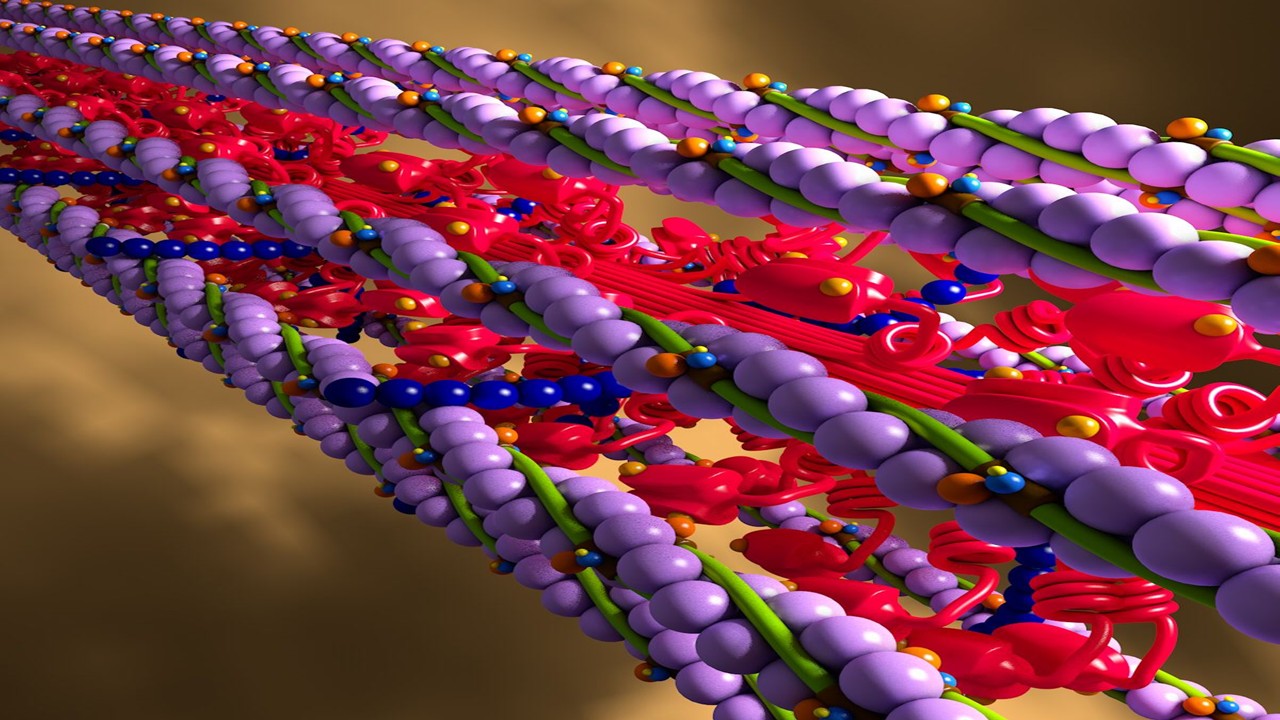The drug development world is buzzing about an unassuming innovation—flycode antibody tags—that is quietly dismantling bottlenecks in therapeutic protein development. These compact peptide sequences, derived from Drosophila protein interaction motifs, are rewriting the rules of antibody engineering by enabling unprecedented tracking, purification, and functional characterization in a single streamlined system. Unlike bulky fluorescent proteins or cumbersome His-tags, flycodes integrate seamlessly into antibody frameworks without disrupting structure or function while providing multifunctional handles for every stage of development. From rapid pharmacokinetic profiling in transgenic fly models to one-step affinity purification from complex cell cultures, these diminutive tags are compressing timelines that have constrained biologics development for decades. The implications are profound: what once took months of iterative optimization now unfolds in weeks, with the tags serving as molecular Swiss Army knives that adapt to each development challenge.
The Structural Elegance of Flycode Architecture
At first glance, flycode tags appear deceptively simple—short 12-15 amino acid sequences with a propensity for stable β-hairpin formation. Their magic lies in the precise conservation of key interaction residues originally evolved for Drosophila immune signaling, now repurposed as versatile biologics handles. Structural biologists note that unlike traditional tags which often project awkwardly from protein surfaces, flycodes nestle into antibody constant regions with minimal surface exposure, preserving native folding and avoiding immunogenicity. The tags’ compactness belies their sophistication; their sequences encode overlapping functional domains that can be accessed independently or in combination through different binding partners.
The tags’ structural resilience is particularly valuable for harsh purification conditions. Where FLAG or HA tags might denature under low pH elution, flycodes maintain their conformation, enabling reuse of affinity columns that would degrade with conventional tags. This robustness stems from their evolutionary origins—Drosophila immune proteins needed to withstand proteolytic environments while maintaining signaling capacity. Modern protein engineers have optimized these natural stability traits through directed evolution, creating second-generation flycodes with enhanced thermal and chemical tolerance.
A key innovation involves “cloaking” mechanisms that hide the tags from immune surveillance in therapeutic applications. By positioning flycodes in antibody hinge regions and exploiting their natural structural mimicry of human framework segments, developers can avoid anti-tag responses that have plagued earlier tagged therapeutics. Some implementations even make the tags proteolytically cleavable during final processing, leaving no trace in the finished drug product while simplifying manufacturing.
The most advanced flycode variants now incorporate allosteric features—their conformation changes in response to environmental cues like pH or redox potential. This allows the same tag to present different binding interfaces during purification (neutral pH) versus in vivo tracking (acidic endosomal pH), effectively multiplexing functionality without adding sequence length. Such smart tags are revolutionizing antibody-drug conjugate development where precise control over tag accessibility at different stages is critical.
Transgenic Flies as Living Bioreactors
The true power of flycode technology emerges when paired with Drosophila melanogaster engineering, creating an integrated discovery platform where antibodies are developed and tested in the same organism. Fly geneticists have engineered strains with humanized immune systems that express therapeutic targets alongside flycode-tagged antibody candidates, enabling rapid in vivo efficacy assessment. This closed-loop system compresses months of cell culture and rodent experiments into weeks of fly breeding.
The approach leverages Drosophila’s short generation time and sophisticated genetic toolkit. A typical workflow might involve generating hundreds of fly lines expressing different flycode-tagged antibody variants against a cancer target, then screening for tumor suppression in larval models within days. The flycodes enable simultaneous tracking of antibody distribution, half-life, and target engagement through simple immunohistochemistry—all in a living system with complex physiology far beyond cell culture.
Metabolic labeling takes this further. By feeding flies isotope-labeled amino acids that incorporate into the flycode region, researchers can perform ultra-sensitive mass spectrometry to quantify antibody pharmacokinetics without sacrificing animals. The flycodes act as mass “handles” that simplify detection amidst the fly’s proteomic background, allowing precise measurement of antibody concentrations in different tissues over time.
The system shines for studying immune cell engagement. Fly hemocytes (immune cells) engineered to express human Fc receptors interact with flycode-tagged antibodies in physiologically relevant ways, predicting how human macrophages or NK cells might respond. This provides early immunogenicity data that would normally require expensive primate studies, all within an insect model.
The most innovative applications involve evolutionary selection. By subjecting fly populations expressing antibody variants to disease pressures over multiple generations, researchers can observe Darwinian selection for the most effective biotherapeutics—a form of directed evolution happening inside a whole organism rather than a test tube. The flycodes then allow easy recovery of winning sequences from surviving flies.
One-Step Purification Through Flycode Affinity
Traditional antibody purification is a multi-step nightmare of protein A columns, ion exchange, and size exclusion—a process flycode technology collapses into a single operation. The tags bind a proprietary synthetic ligand with picomolar affinity while rejecting virtually all other proteins, yielding purities exceeding 99% in one pass. Process chemists emphasize that this simplicity is revolutionizing manufacturing, particularly for bispecifics and other complex formats that traditionally suffer from poor recovery.
The secret lies in the flycode ligand’s extreme selectivity. Unlike protein A which binds all IgGs, flycode ligands ignore untagged antibodies entirely, enabling purification of specific variants from complex expression cocktails. This allows parallel development of dozens of candidates in a single bioreactor, with each flycode-tagged antibody fished out separately—a multiplexing capability impossible with conventional platforms.
Stability under harsh cleaning conditions is another advantage. Where protein A columns degrade with repeated NaOH sanitization, flycode matrices withstand aggressive cleaning while maintaining binding capacity. This extends resin lifetimes dramatically, cutting costs for large-scale production. The ligands themselves are synthetic peptides rather than biologicals, eliminating risks of viral contamination that haunt traditional purification systems.
The system’s flexibility enables creative applications. Some developers now use cleavable flycodes that release antibodies under mild reducing conditions, avoiding the acidic elution that can aggregate sensitive molecules. Others exploit the tags’ small size to purify antibody fragments and single-domain constructs that protein A handles poorly. The most advanced implementations incorporate flycode purification directly into continuous manufacturing systems, creating seamless antibody production pipelines.
Emerging applications extend beyond antibodies. Flycode-tagged enzymes, cytokines, and even viral vectors can be purified using the same platform, potentially standardizing downstream processing across diverse biologics pipelines. This universality is driving adoption across the biotech sector despite the technology’s novelty.
Real-Time Tracking with Flycode Molecular Handles
Understanding a therapeutic antibody’s fate in living systems traditionally required radioactive labeling or bulky fluorescent proteins—compromises flycode technology renders obsolete. The tags serve as multimodal handles for non-invasive tracking, enabling researchers to follow antibodies from injection to elimination without modifying their native properties. Imaging specialists highlight how this overcomes the “observer effect” where tracking methods themselves alter antibody behavior.
PET imaging benefits particularly. Flycodes engineered with chelator motifs bind diagnostic radiometals like copper-64 or zirconium-89 with unparalleled stability, preventing leakage that distorts pharmacokinetic readings. The small tag size avoids the altered clearance seen with larger fusion tags, giving truer pictures of antibody distribution. Early oncology trials using flycode-tagged therapeutics report the most precise tumor uptake measurements ever recorded, revealing previously obscure dosing thresholds.
For optical imaging, flycodes activate near-infrared fluorogens through proximity-induced fluorescence. Unlike GFP fusions that are always “on,” these fluorogens only light up when bound to their flycode, eliminating background signal from unbound antibodies. The approach provides real-time surgical guidance in animal models, with potential for human image-guided surgery applications.
Mass cytometry applications are equally transformative. Antibodies tagged with metal-binding flycodes enable hyperplexed tissue analysis, where dozens of antibody targets can be quantified simultaneously using rare-earth metal detection. The system’s sensitivity reveals antibody penetration gradients in tissues at subcellular resolution—data impossible to obtain through traditional methods.
The most innovative tracking combines modalities. A single flycode might enable PET imaging during early distribution phases, then switch to fluorescent readouts for cellular localization, all while maintaining the antibody’s therapeutic function intact. This multimodal capacity is providing unprecedented insights into antibody mechanisms that were previously inferential at best.
Accelerating Epitope Binning Through Flycode Multiplexing
Characterizing how antibodies interact with their targets—epitope binning—traditionally required painstaking pairwise testing that bottlenecked lead selection. Flycode technology disrupts this by enabling massively parallel binning assays where hundreds of antibody variants compete simultaneously for antigen binding. Protein engineers describe this as moving from dial-up to broadband in epitope mapping.
The approach leverages flycode-encoded antibody libraries mixed with antigen-coated beads. After incubation, next-generation sequencing of the flycode regions reveals which antibodies bound and their relative affinities based on sequence abundance. The same flycodes that enabled purification now serve as molecular barcodes, tracking each antibody’s behavior in the high-throughput competition.
The system’s sensitivity resolves subtle epitope differences that escape traditional methods. By analyzing competition patterns across antibody clusters, researchers can map antigenic surfaces with amino acid resolution, guiding rational engineering of improved binders. Some implementations even incorporate machine learning to predict new epitopes from binning patterns, accelerating discovery of previously obscure binding sites.
Dynamic binning takes this further. Instead of static binding measurements, flycode-tagged antibodies are tracked during antigen conformational changes induced by pH shifts or ligand binding. This captures transient epitopes that might be critical for therapeutic function but invisible to conventional approaches. The method has proven particularly valuable for targeting G protein-coupled receptors and other dynamic membrane proteins.
The most advanced applications combine binning with functional data. By expressing flycode-tagged antibodies in phenotypic assays—say, tumor cell killing—then sequencing the flycodes from surviving cells, researchers can directly link epitope occupancy to biological effect. This functional binning is compressing the years-long process of mechanistic antibody characterization into weeks.
Flycode-Enabled Bispecifics and Beyond
The complexity of multispecific antibodies has long frustrated developers—flycode tags are cutting this Gordian knot by providing standardized assembly points for complex architectures. Protein engineers note that the tags’ small size and consistent behavior across antibody frameworks make them ideal “molecular LEGO” connectors for building bispecifics, trispecifics, and beyond.
A common strategy uses orthogonal flycode variants that bind different synthetic ligands. For instance, a “flycode A”-tagged anti-CD3 arm might be purified separately from a “flycode B”-tagged anti-tumor arm, then combined through a small heterodimerizer molecule that bridges the two tags. This modular approach avoids the manufacturing nightmares of traditional bispecific platforms while ensuring precise 1:1 stoichiometry.
The tags also enable quality control previously impossible with complex formats. Mass spectrometry of flycode regions confirms correct assembly, while flycode-specific ELISA pairs quantify individual arms in final products. This analytical power is critical for regulators accepting novel multispecific constructs that would be too risky without such rigorous characterization.
T-cell engagers benefit particularly. By placing different flycodes on CD3-binding versus tumor-targeting domains, developers can fine-tune each arm’s properties independently during early optimization, then combine the best performers. The tags even enable post-assembly “tuning”—adding competitor peptides that partially block one flycode to modulate relative binding avidities for optimal therapeutic window.
The frontier involves conditionally active multispecifics. Some teams engineer flycodes that release one antibody arm in response to tumor microenvironment cues like MMP cleavage or reducing conditions. This creates “smart” bispecifics that only fully assemble at disease sites, minimizing systemic toxicity while maintaining potent local activity.
Overcoming Immunogenicity Challenges
A persistent concern with tagged therapeutics is unwanted immune responses against the non-human sequences—a risk flycode technology mitigates through clever design. Immunologists emphasize that the tags’ Drosophila origins actually confer advantages, as evolutionary distance from mammals means flycodes lack homology to human proteins that might drive T-cell responses.
Deimmunization engineering has further refined the tags. Computational tools identified and removed potential T-cell epitopes from flycode sequences without compromising function, creating “stealth” variants that evade immune detection even in sensitive populations. Some second-generation flycodes incorporate human framework mimicry segments that trick immune surveillance into ignoring them as “self.”
The tags’ small size also helps. At 12-15 amino acids, flycodes fall below the typical peptide length required for robust MHC class II presentation, reducing helper T-cell activation risk. Their compact structure also hides potential epitopes that might be exposed in larger, less structured tags.
Ironically, the tags’ stability against proteolysis—normally a benefit—required careful modulation to avoid generating long-lived peptides that could stimulate immunity. Newer flycode variants include designed degradation signals that ensure rapid processing if the tag is cleaved, preventing persistent immunogenic fragments.
The most innovative solutions make immunogenicity a feature. Some teams engineer flycodes as “immune primers” that deliberately stimulate weak helper T-cell responses to boost antibody-dependent cellular cytotoxicity against cancer targets. This controlled immunogenicity, impossible with traditional tags, represents a paradigm shift in therapeutic antibody design.
The Future: Flycodes in Gene Therapy and Beyond
The applications of flycode technology are expanding beyond antibodies into viral vectors, cell therapies, and even small-molecule drug delivery. Gene therapy researchers now use flycodes to pseudotype AAV capsids, enabling rapid purification and precise tracking of viral distribution—a longstanding challenge in the field.
In CAR-T development, flycode-tagged receptors allow unprecedented control over cell product quality. The tags serve both to purify transduced T-cells and to monitor receptor density—a critical quality attribute—through simple flow cytometry. Some designs even incorporate flycode-dependent suicide switches for improved safety control.
Nanoparticle drug delivery systems benefit similarly. Flycode-decorated liposomes enable precise characterization of drug loading and in vivo fate, addressing the “black box” problem that has hindered nanomedicine development. The tags’ small size avoids the pharmacokinetic disruption seen with larger targeting moieties.
The most visionary applications involve synthetic biology. Flycodes are being adapted as orthogonal protein interaction modules in engineered genetic circuits, allowing artificial signaling pathways to be built with the same precision as antibody manufacturing. This could enable smart therapeutics that sense disease states and respond with precisely tuned biological outputs.
As the technology matures, its impact may ultimately be greatest in democratizing biologics development. By simplifying the most technically demanding aspects of antibody engineering, flycode tags are putting sophisticated therapeutic design within reach of academic labs and small biotechs—potentially unleashing a wave of innovation from non-traditional drug discoverers.
Small Tags, Giant Leap for Drug Development
The flycode revolution exemplifies how a seemingly modest innovation—a tiny protein tag—can cascade through every stage of drug development, accelerating timelines while improving product quality. What began as a clever repurposing of Drosophila biology has matured into a platform technology transforming how therapeutic proteins are discovered, optimized, and manufactured.
As the technology spreads, its greatest legacy may be in changing the very philosophy of biologics development. Where traditional approaches treated antibody engineering as a series of discrete challenges—expression, purification, characterization—flycode technology integrates these into a seamless continuum where each step informs and enables the next.
The implications extend beyond faster drugs to better drugs: therapeutics whose behavior in living systems is understood with unprecedented precision, whose manufacturing is controlled with new rigor, and whose clinical potential can be explored more thoroughly before human testing. In the high-stakes world of biotherapeutics, flycode tags are proving that sometimes the smallest innovations cast the longest shadows.
Engr. Dex Marco Tiu Guibelondo, B.Sc. Pharm, R.Ph., B.Sc. CpE
Editor-in-Chief, PharmaFEATURES

Subscribe
to get our
LATEST NEWS
Related Posts

Drug Discovery Biology
Democratizing Mass Spectrometry: The Automation Revolution Unlocking Precision Measurement
Automation simplifies workflows and enables new experiments with mass spec’s unmatched specificity.

Drug Discovery Biology
Precision Cell Factories: Engineering Superior Biologics-Producing Cell Lines
Modern cell line development is a precision-driven field where single edits can make or break a monoclonal antibody’s success.

Drug Discovery Biology
Pathoblockers: The Next Frontier in Precision Antimicrobial Intervention
Pathoblockers represent more than just another antimicrobial class—they embody a fundamental rethinking of infection control that prioritizes strategic disarmament over indiscriminate killing.

Molecular Biology & Biotechnology
Myosin’s Molecular Toggle: How Dimerization of the Globular Tail Domain Controls the Motor Function of Myo5a
Myo5a exists in either an inhibited, triangulated rest or an extended, motile activation, each conformation dictated by the interplay between the GTD and its surroundings.
Read More Articles
Chemical Gale: How Wind Energy is Reshaping Industrial Manufacturing
The integration of wind energy into chemical manufacturing constitutes a fundamental reimagining of process chemistry.
Algorithmic Trials: How Decision Theory is Reshaping Decentralized Clinical Research
Decision theory offers a robust mathematical framework to design trials that enhance efficiency, uphold ethical standards, and better reflect the complexities of real-world therapeutic contexts.
Polarity Alchemy: Strategic Charge Manipulation in Contemporary Drug Design
The future promises tunable therapies with polarity adjustable by light, magnetic fields, or bioorthogonal triggers.











